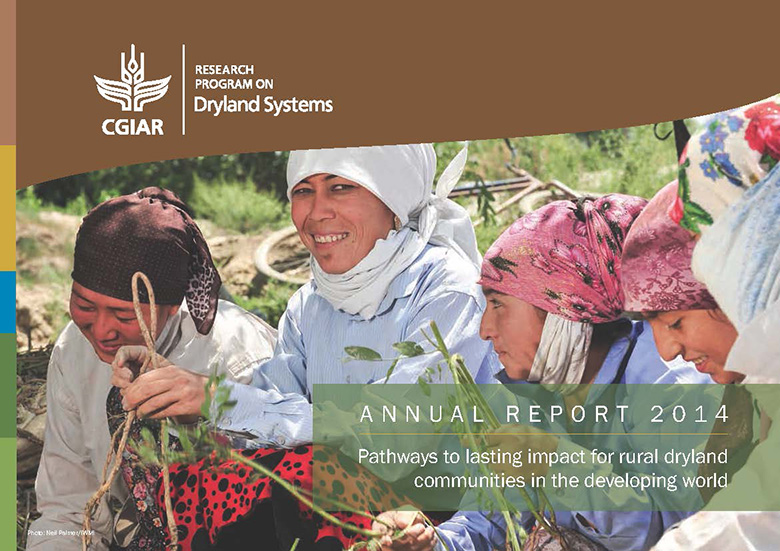CGIAR Research Program on Dryland Systems launches its Annual Report for 2014

Dryland Systems 2014 Annual Report Pathways to Lasting Impact for Rural Dryland Communities in the Developing World highlights the program’s main contributions to reducing poverty, improving food and nutrition security, and ensuring sustainable natural resources management in the world’s rural dry areas.
2014 was a year full of achievements for Dryland Systems as it helped shape thinking and practice on agricultural livelihood systems to drive and deliver innovative interventions. There was real development impact in rural dryland communities of the developing world.
As Richard Thomas, Program Director of Dryland Systems explains, "Rural dryland communities in the developing world have suffered a history of neglect, sustainable development… The Dryland Systems program aims to overturn this neglect and shape the drylands discourse by producing a robust body of scientific knowledge that includes technological, policy and institutional innovations to address major dryland challenges.”
The key focus of Dryland Systems’ research work was on identifying and leveraging drivers to bring about improvements in dryland agricultural livelihood systems at local, national, and global scales. This was done in collaboration with their 227 partners and 45-innovation platforms. Through these associations, there was a direct engagement with the beneficiaries and it was ensured that the research findings lead to demand-driven development. Special emphasis was given to mainstream gender across all the activities.
Dryland Systems was the first CGIAR Research Program to develop a Youth Strategy. They also launched a Monitoring, Evaluation and Learning (MEL) platform to ensure better result-based management, reporting, coordination, risk and performance monitoring and evaluation, as well as knowledge sharing and learning across the program.
A few highlights of this Annual Report are as follows:
- Establishment of 25 databases giving unrestricted online access to spatial data, which were accessed by over 15,000 people in 119 countries through the open-access Geoinformatics Portal.
- 352,000 men and 117,348 women farmers were part of field-trials to apply and adopt sustainable natural resources management practices in Africa, Asia and the Middle East.
- Significant scientific knowledge contributions were made to systems research for dealing with climate change, land degradation and food security, and driving development in world’s rural drylands; 125 articles published, including 72 in ISI journals.
- A new study on the economics of salt-induced land degradation and restoration identified successful methods for draining saline land and reversing soil degradation.
- Comprehensive, multidimensional gender-responsive livelihood data made available for more than 3,000 household farms across Dryland Systems research sites.
- New, improved crop varieties boosted production and incomes and 620+ tonnes of quality seeds produced in dryland areas.
- Village-based seed enterprises were established in several countries in North and West Africa, program to integrate community-based seed production systems into inclusive food value chains and open up opportunities for women and young people to set up their own agro-entrepreneurial activities.
- Health and wellbeing was promoted by a number of water harvesting practices in India and Pakistan through various communications materials, including 67,000 manuals and brochures in English, Urdu, and local languages, training videos, farmer days, radio, and TV programs.
- A new Climate Change and Drought Atlas for Jordan containing 339 maps that show climate change patterns in Jordan over the past decades, how it is likely to change in the future, and what policymakers and communities can do to adapt to widespread water scarcity and more droughts that are anticipated over the coming years.
To read more about these and other 2014 achievements, please visit here or download the full document (pdf) here.
